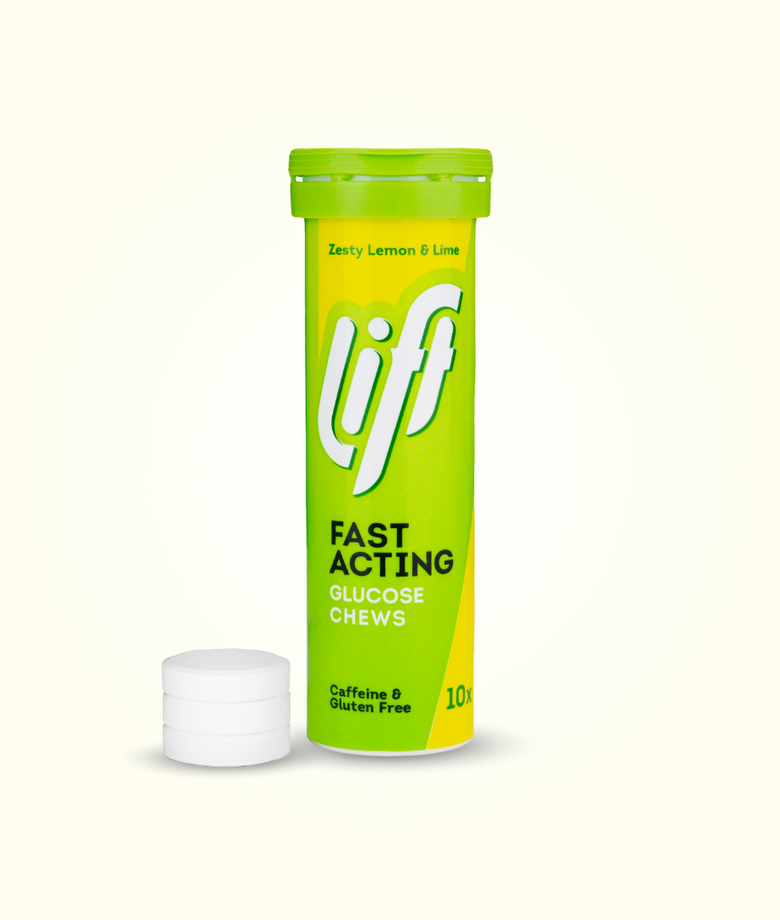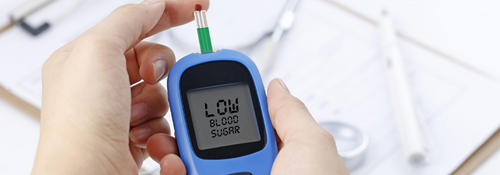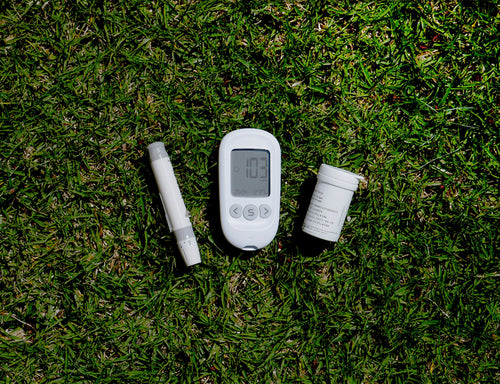What is hypoglycaemia?
Hypoglycaemia (also spelt hypoglycaemia) is a medical condition characterised by low blood sugar or low blood glucose. This occurs when the level of glucose, the body's main source of energy, in your blood drops below normal.
Although the optimal blood glucose ratio often varies between individuals, symptoms of hypoglycaemia occur in many people when blood sugar levels are below 4 mmol/L. As a result of differences in our physiology, this number differs from person to person.
People with hypoglycaemia need immediate treatment to get their blood glucose levels back to normal. Treatment may involve using high-sugar foods or supplements to boost glucose levels before identifying and treating the underlying cause.
Symptoms of Hypoglycaemia
Hypoglycaemia is most common in people with diabetes. The symptoms of hypoglycaemia typically come on quickly and may range from mild to moderate to severe, depending on how low your blood glucose level gets.
People with mild hypoglycaemia may experience the following symptoms:
- Insatiable hunger
- Blurred vision
- Headaches
- Sweating
- Pale, cold, or clammy skin
- Confusion or disorientation
People with moderate hypoglycaemia may experience the following symptoms:
- Feeling weak, sleepy, or tired
- Trouble concentrating
- Dizziness or light-headedness
- Rapid or irregular heart rate
- Nausea, vomiting, abdominal discomfort
- Becoming cranky, argumentative, or combative
- Body coordination problems
- Numbness of the tongue, lips, or cheek
People with severe hypoglycaemia may experience the following symptoms:
- Body tremors or trembling
- Inability to eat or drink
- Mood swings or changes in personality
- Seizures or convulsions
- Loss of consciousness or coma
Not every case of hypoglycaemia will experience most of the symptoms listed above. Even when symptoms occur, there is no fixed order for their appearance. Factors like age and any underlying health conditions will affect the severity of hypoglycaemia.
In very severe cases hypoglycaemia can also be fatal. Typically, those with diabetes and who struggle to achieve good control of their blood glucose levels are most at risk of severe hypoglycaemia. This lack of control combined with poor symptom recognition and/or not reacting quickly enough can lead to life threatening problems.
Treating Hypoglycaemia and Diagnosis
If you have diabetes:
Carry out a blood glucose test to ensure it is not below your target level or below 4mmol/L. If it is, you should eat or drink something containing carbohydrates to boost your glucose levels. This will often help your symptoms go away. Contact a doctor if symptoms persist or get more severe after eating.
For non-diabetics:
Call 111 immediately if you feel that you or someone close to you is experiencing the symptoms of hypoglycaemia.
Causes of Hypoglycaemia
Although hypoglycaemia is caused by a drop in your blood glucose levels, there are several reasons why this may happen. The most common of these is a side effect of insulin or other types of medicines used to treat diabetes. The reason for this is pretty simple.
When we eat, our digestive system breaks down the food to create glucose which is the body’s primary source of energy. To help your cells absorb this energy, the pancreas excretes insulin, a hormone that breaks down glucose.
As this glucose is absorbed by the cells with the aid of insulin, our blood – glucose levels drop. If a person with diabetes takes a higher dose of insulin than their body needs, their blood sugar levels can fall too far.
Causes of Hypoglycaemia in People with Diabetes
Hypoglycaemia can also occur if someone with diabetes over exercises or fails to eat enough food. According to Diabetes.co.uk, several types of diabetes drugs can cause hypoglycaemia.
These drugs are insulin, sulfonylureas, meglitinides, and other types of diabetes medication that help your body make more insulin. Other drugs that can increase your chances of having hypoglycaemia include take allopurinol, probenecid, warfarin, sulfonylurea, and meglitinide.
The following factors can increase your chances of having hypoglycaemia:
Not eating enough carbs
Carbohydrates are the body’s biggest source of glucose. Failure to eat enough carbohydrates, especially when taking diabetes medication, can lead to a drop in your blood – glucose level.
Increased physical activity
Significant changes to your physical activities or exercising more than you normally do can reduce your blood – glucose level.
Consuming a lot of alcohol
Alcohol reduces the body’s ability to maintain blood glucose levels, especially if you fail to eat properly before or after drinking.
Pre-existing medical conditions
Some illnesses can make it difficult to eat or process your food efficiently. This can lead to low blood glucose levels.
Causes of Hypoglycaemia in People without Diabetes
It is also possible for people who don't have diabetes to experience symptoms of hypoglycaemia; especially in those who have not eaten for an extended period of time or who have been overly active without eating. Other factors like severe illnesses and hormone deficiencies can also cause hypoglycaemia.
Other Factors that Contribute to Hypoglycaemia in Non-Diabetics
The following factors can increase your chances of having hypoglycaemia even if you don’t have diabetes:
Medication
Taking diabetes medication when you are a non-diabetic can cause significant changes to your body’s glucose levels.
Insulin overproduction
Problems with your pancreas can cause an overproduction of insulin, leading to hypoglycaemia.
Critical illnesses
Some severe diseases, as well as medications taken to treat them, can affect your glucose levels.
How to Prevent Hypoglycaemia if You have Diabetes?
You can reduce your chances of developing hypoglycaemia as a diabetic by following your diabetes management plan strictly. The following factors can also help reduce your risk:
-
Check your glucose level
Knowing your glucose level using a blood glucose meter will help you regulate the amount of mediation you take, the food you eat, and how physically active you should be. -
Eat regularly
Eating healthy meals and snacks regularly is the best way to prevent hypoglycaemia. Find out the correct amount of carbohydrates to maintain your blood glucose level and stick to it. You can also carry a snack to boost your energy levels between meals. -
Monitor physical activities
Engaging in physical activities will almost always result in a drop in your glucose levels increasing your risk of hypoglycaemia. To be safe, you should monitor your blood glucose levels before and after strenuous activities. -
Follow your doctor’s instructions
Remember to contact your doctor if you notice symptoms of hypoglycaemia and follow their recommendations and updates to your diabetes management plan.
Treating Hypoglycaemia
If you notice the symptoms of hypoglycaemia, you should immediately consume a glucose supplement. These are specially designed to quickly release pure glucose into the body.
If you don’t have one readily available, consuming a lump of sugar, some confectionery, or drinking a glass of fruit juice can bring rapid relief. However, you should follow this up with healthier carbohydrates.
With diabetes
Check your blood glucose level, if it is below your target or less than 4mmol/L, eat or drink 15 grams of carbohydrates as soon as they notice symptoms of hypoglycaemia. Check your glucose level again in 15 minutes and repeat treatment if it is still low.
Summary
- Hypoglycaemia occurs when the level of glucose in your blood drops below 4mmol/L.
- People with pre-existing medical conditions, especially diabetes, have a higher risk of experiencing hypoglycaemia.
- You can prevent and treat hypoglycaemia by eating regularly and monitoring your blood glucose level.






